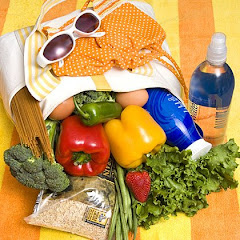Alcohol Brain damage risks
What is the summary report?
Harmful Consequences of Alcohol Use on the Brains of Children, Adolescents, and College Students is a compilation and summary of two decades of comprehensive research on how alcohol affects the brains of youth. The report's aggregation of extensive scientific and medical information reveals just how harmful drinking is to the developing brain and serves as a wakeup call to parents, physicians, elected officials, law enforcement, purveyors of alcohol – including the alcohol industry – and young drinkers themselves.
Why is this report important?
The average age of a child's first drink is now 12, and nearly 20 percent of 12 to 20 year-olds are considered binge drinkers. While many believe that underage drinking is an inevitable "rite of passage" that adolescents can easily recover from because their bodies are more resilient, the opposite is true.
The adolescent brain
The brain goes through dynamic change during adolescence, and alcohol can seriously damage long- and short-term growth processes. Frontal lobe development and the refinement of pathways and connections continue until age 16, and a high rate of energy is used as the brain matures until age 20. Damage from alcohol at this time can be long-term and irreversible. In addition, short-term or moderate drinking impairs learning and memory far more in youth than adults. Adolescents need only drink half as much to suffer the same negative effects.
Drinkers vs. non-drinkers: research findings
- Adolescent drinkers scored worse than non-users on vocabulary, general information, memory, memory retrieval and at least three other tests
- Verbal and nonverbal information recall was most heavily affected, with a 10 percent performance decrease in alcohol users
- Significant neuropsychological deficits exist in early to middle adolescents (ages 15 and 16) with histories of extensive alcohol use
- Adolescent drinkers perform worse in school, are more likely to fall behind and have an increased risk of social problems, depression, suicidal thoughts and violence
- Alcohol affects the sleep cycle, resulting in impaired learning and memory as well as disrupted release of hormones necessary for growth and maturation
- Alcohol use increases risk of stroke among young drinkers
Adverse effects of alcohol on the brain: research findings
Youth who drink can have a significant reduction in learning and memory, and teen alcohol users are most susceptible to damaging two key brain areas that are undergoing dramatic changes in adolescence:
- The hippocampus handles many types of memory and learning and suffers from the worst alcohol-related brain damage in teens. Those who had been drinking more and for longer had significantly smaller hippocampi (10 percent).
- The prefrontal area (behind the forehead) undergoes the most change during adolescence. Researchers found that adolescent drinking could cause severe changes in this area and others, which play an important role in forming adult personality and behavior and is often called the CEO of the brain.
Lasting implications
Compared to students who drink moderately or not at all, frequent drinkers may never be able to catch up in adulthood, since alcohol inhibits systems crucial for storing new information as long-term memories and makes it difficult to immediately remember what was just learned.
Additionally, those who binge once a week or increase their drinking from age 18 to 24 may have problems attaining the goals of young adulthood—marriage, educational attainment, employment, and financial independence. And rather than "outgrowing" alcohol use, young abusers are significantly more likely to have drinking problems as adults.
What can be done to stop this epidemic?
The AMA advocates numerous ways to combat this growing epidemic, including:
- Reducing access to alcohol for children and youth
- Reducing sales and provision of alcohol to children and youth
- Increasing enforcement of underage drinking laws
- Providing more education about the harmful effects of alcohol abuse
- Reducing the demand for alcohol and the normalization of alcohol use by children and youth
A major source of the normalization of alcohol use by children and youth is alcohol advertising. Television networks and cable stations have profited tremendously from the alcohol industry's aggressive marketing to underage drinkers. These ads are proven to heavily influence the normalization and glamorization of drinking in the minds of children, and television has continued to endanger the health of these young viewers in spite of such findings.
With these new findings of the adverse effects of alcohol on the brain of children and adolescents, the AMA calls on cable TV and the TV networks to pledge not to run alcohol ads targeted at underage youth. This means no alcohol ads before 10 p.m., none on shows with 15 percent or more underage viewers and no commercials with cartoons, mascots or other youth-focused images.






















